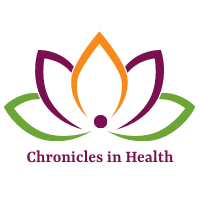This week marks the beginning of summer! Most of us look forward to these days: enjoying the outdoors, hiking, summer gatherings, spending time near the lake, camping, and gardening are just a few of the things we enjoy about summer. Yet, summer can take a toll on our skin. Being outdoors in the sun can be both beneficial and challenging all at the same time. The best source of vitamin D is through sunshine but sunscreens block this from happening. The other challenge is that most sunscreens have toxic chemicals.
I have only used sunscreen a couple of times in the past few years to avoid these toxins, and in this time period, I have not been sunburned, but I have used other strategies to combat sun exposure and it is not hiding indoors!

The first strategy I have used is to wear clothing as a protective cover when I am outside for long periods of time. I also wear a brimmed hat to limit the amount of sun my face is exposed to especially if I am outside during 10 am and 2 pm as this is when the sun is at its highest point. I do my gardening either early in the morning or in the evening; it is a lot cooler during these times as well. Hubby and I try to avoid hiking during the middle of the day also.
One of the biggest factors to maintain healthy skin and avoiding sun damage has been my diet modifications. Did you know there are several foods that can provide ultraviolet (UV) protection? Here are five foods that can help protect your skin from sun damage and may help heal skin that has already been burned.
Strawberries contain vitamin C as well as ellagic acid (an antioxidant that removes toxins from your body). You can check out this study to learn more about the photo-protective properties of strawberries.
Blueberries are a rich source of antioxidants. Even though we are exposed to UV radiation when out in the sun, antioxidant foods with their free-radical-fighting properties, help to protect us from the sun damage. They are also a great source of vitamin C.
Green Tea has been used medicinally for many centuries for good reason. It provides a range of healing benefits from detoxification, reducing blood pressure, and may reduce the risk of some cancers. It can be consumed internally to promote DNA repair due to the polyphenol Epigallocatechin Gallate (EGCG). It is packed with vitamins B2 and E that help hydrate and protect the skin. It can also be applied externally; the EGCG can reduce skin redness.
Tomatoes are another great food for the skin. It actually has been shown to protect the skin from UV damage. It is the greatest source of the antioxidant lycopene. One study found that tomato consumption can lesson UV light induced sunburn. The lycopene is absorbed the best from cooked tomatoes with some olive oil. It can also be found in tomato sauce, paste, puree, and salsa.

Carrots are a great source of beta-carotene which our body converts to vitamin A which reduces inflammation caused from sunburn. There is research that has shown that beta-carotene can shield our body from sunburn. This study noted that a minimum of 10 weeks was needed to be effective therefore this protection is time dependent.
The sun can be beneficial for our overall health being the primary source of vitamin D. Vitamin D is necessary for strong immunity, mental health, bone health, and sleep; but we still need to use wisdom when enjoying the sun. If you do choose to use sunscreen, purchase a safe sunscreen to mitigate the amount of toxic chemicals you are exposed to. The Environmental Working Group (EWG) publishes a guide each year on sunscreens. They also have a guide for sunscreens that meet EWG’s criteria. My daughter has had good success with this product for sun protection for her daughter.
Enjoying the sun is important for a healthy life, but we also need to use wisdom:
- Eat a healthy diet to improve your own body’s sun protection.
- Enjoy the sun during non-peak hours (early morning or late afternoon).
- Use clothing to cover up if out in the sun for extended time periods or peak times.
- If using sunscreen, choose a safe one.
Will you add these foods to your diet? Do you get enough daily sunshine to produce sufficient vitamin D? What steps do you take to protect your skin from sun damage? For more tips on keeping your skin healthy, check out Did Your Skin Survive Summer?.
Be blessed and be a blessing,
Heather
Sources
- https://www.eurekalert.org/pub_releases/2012-08/f-sf-sep080312.php
- https://www.annualreviews.org/doi/10.1146/annurev.nutr.24.012003.132320
- https://www.ncbi.nlm.nih.gov/pmc/articles/PMC6528337/
- https://www.ncbi.nlm.nih.gov/pmc/articles/PMC5506060/
- https://pubmed.ncbi.nlm.nih.gov/18086246/
- https://www.ewg.org/sunscreen/report/executive-summary/
- https://www.ewg.org/sunscreen/best-sunscreens/best-beach-sport-sunscreens/
The information, including but not limited to, text, graphics, images and other material contained on this website are for informational purposes only. The purpose of this website is to promote broad consumer understanding and knowledge of various health topics. It is not intended to be a substitute for professional medical advice, diagnosis or treatment. Always seek the advice of your physician or other qualified health care provider with any questions you may have regarding a medical condition or treatment and before undertaking a new health care regimen, and never disregard professional medical advice or delay in seeking it because of something you have read on this website.
Posts may contain affiliate links. If you purchase a product through an affiliate link, your costs will be the same but Chronicles in Health will receive a small commission. This helps cover some of the costs for this site. I appreciate your support!


